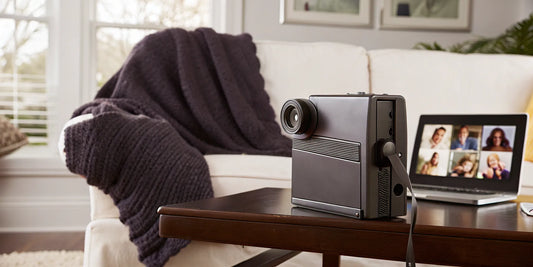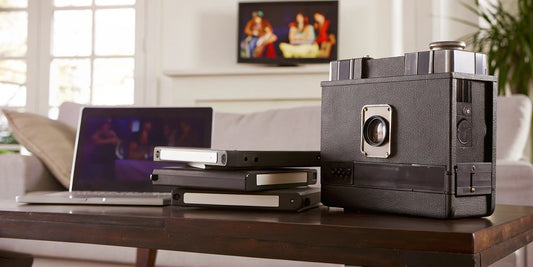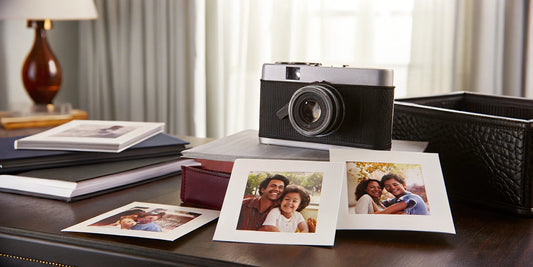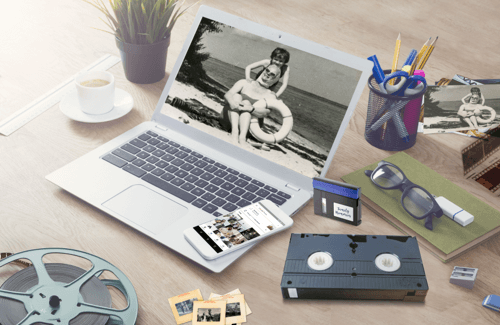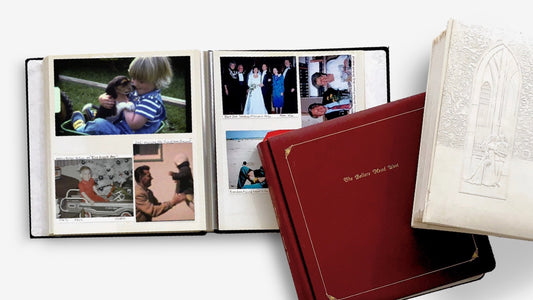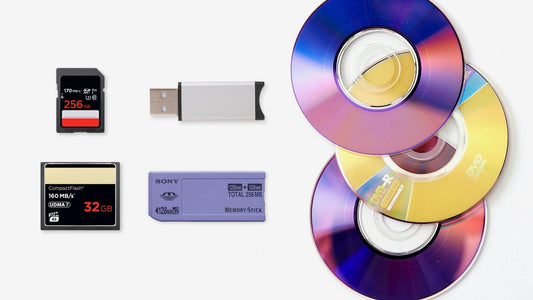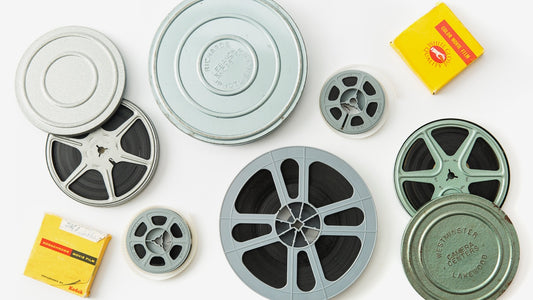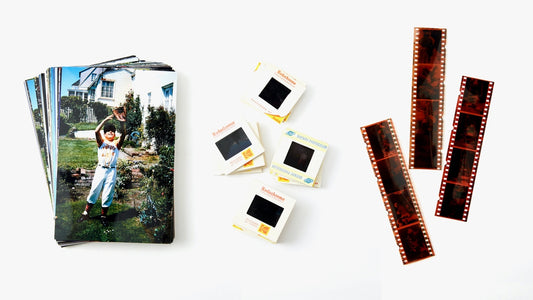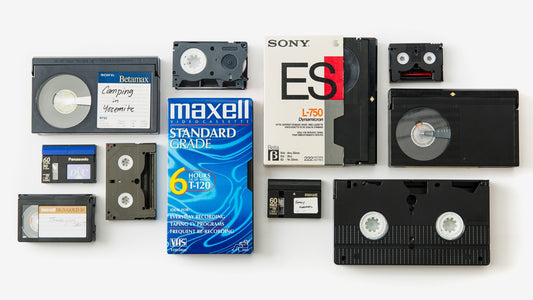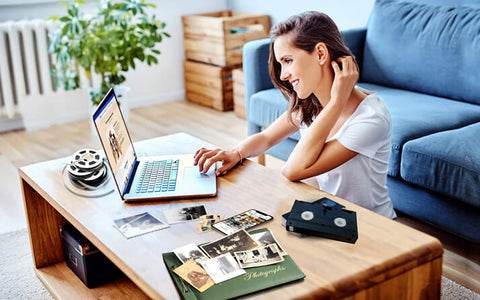It’s a frustratingly common problem: you’re ready to upload photos from a recent event, only to realize your sleek new laptop doesn’t have a slot for your camera’s memory card. As computers get thinner, these once-standard ports are disappearing, leaving your memories stranded. The solution is a simple and affordable sd card to usb adapter. This small but mighty tool is the key to moving your files from any SD card to any computer with a USB port. In this guide, we’ll break down everything you need to know to find the perfect adapter for your needs, ensuring your memories never get left behind by changing technology.
Key Takeaways
- Choose speed based on your files: A basic, affordable adapter works well for occasional photo transfers, but a USB 3.0 model is essential for moving large video files or big batches of images without the long wait.
- Double-check compatibility before you buy: Make sure the adapter’s USB plug (like the rectangular USB-A or oval USB-C) matches your computer’s ports and that it has the correct slots for your specific memory cards.
- Practice safe transfer habits: To protect your memories, always copy files to your computer instead of moving them. Once the transfer is complete, use the "eject" function before unplugging the adapter to prevent data corruption.
What Is an SD Card to USB Adapter?
Think of an SD card to USB adapter as a tiny, helpful bridge. It connects the small memory card from your camera, camcorder, or older phone to the USB port on your computer. Its one job is to let you move your precious photos and videos from the card to a device where you can view, edit, and safely store them. If your laptop or desktop computer doesn’t have a built-in SD card slot—and many modern ones don't—this little gadget is essential.
These adapters are a straightforward solution for accessing files stored on various types of memory cards. Instead of fumbling with complicated cables or software, you get a simple plug-in device that makes transferring your memories a breeze. Whether you're trying to free up space on your camera's memory card or finally get around to backing up years of family photos, an adapter is the key to making it happen quickly and easily. It’s a must-have tool for anyone looking to manage their digital keepsakes.
How an Adapter Works
The best part about using an SD card to USB adapter is its simplicity. Most are "Plug & Play," which means you don't need to install any special software or drivers to get them to work. You simply slide your SD card into the designated slot on the adapter, then plug the adapter’s USB end into an available port on your computer. Your computer will recognize it just like a standard USB flash drive, and a new drive icon will appear. From there, you can open the folder and drag and drop your files to your computer’s hard drive.
Common Types of Adapters
Adapters come in a few different shapes and sizes to match the devices you’re using. The most common difference is the type of USB connector. You’ll find adapters with USB-A (the classic, rectangular plug), USB-C (the smaller, oval-shaped plug found on newer laptops and smartphones), and even Micro USB connectors. Some adapters are multi-functional, offering several types of card slots to read not just SD cards but also MicroSD, CF, and other formats. This is perfect if you have multiple cameras or devices that use different memory cards.
Why You Might Need One
An adapter is incredibly useful for anyone who wants to preserve their digital memories. It’s the easiest way to get photos and videos off an old digital camera and onto your computer for safekeeping. If you're consolidating photos from various family members or devices, an adapter makes it simple to gather everything in one place. It’s also a lifesaver when you want to move files to a new device that lacks an SD card slot. By transferring your files, you can create backups, share them with loved ones, or prepare them for a professional photo transfer service to create a lasting digital archive.
The Best SD Card to USB Adapters
Finding the right SD card to USB adapter can feel like a small task, but it makes a huge difference when you’re trying to move your precious photos and videos. The last thing you want is a slow, clunky transfer when you’re excited to see your latest shots. The good news is that there’s an adapter for every need and budget, whether you’re a professional photographer transferring huge files or just getting vacation pictures onto your computer.
Think of an adapter as the bridge between your memory card and your computer. A good one makes the process seamless, while a bad one can be a frustrating bottleneck. To help you find the perfect match, I’ve broken down the best options based on performance and price. We’ll look at everything from high-speed models for power users to budget-friendly picks that get the job done without breaking the bank. This way, you can spend less time waiting on file transfers and more time reliving your favorite moments.
For Top-Tier Performance
If you’re regularly working with large files like high-resolution photos or 4K video, a top-tier adapter is a worthwhile investment. These models are all about speed. Many use USB 3.0 technology, which allows them to transfer data at incredible rates—up to 5 Gigabits per second. In real-world terms, that means you can move a whole photoshoot’s worth of images in minutes, not hours. Look for brands known for quality and speed, like Anker, ProGrade Digital, or SanDisk. They often feature durable metal casings and support the fastest card standards, like UHS-II, ensuring you’re getting every bit of speed your memory card can offer.
Reliable Mid-Range Options
You don’t have to spend a lot to get a great, reliable adapter. There are plenty of fantastic mid-range options that offer a perfect balance of speed, quality, and price. You can find many of these solid performers for around $5 to $15 at retailers like Walmart and Best Buy. These adapters are ideal for most people, whether you’re offloading photos from your camera after a family trip or transferring documents. While they might not have the blazing-fast speeds of the premium models, they are typically more than fast enough for everyday use and are built to be dependable companions for your laptop bag.
Great Budget-Friendly Picks
Sometimes, you just need something that works without any fuss or extra cost. If you only transfer files occasionally or need a backup adapter just in case, a budget-friendly pick is the way to go. You can find basic adapters for under $5 on sites like Amazon, and they do exactly what you need them to: move files from point A to point B. The trade-off is usually slower transfer speeds and a simpler plastic build. But for pulling a few photos off an old camera card or for light, infrequent use, these affordable adapters are an incredibly practical and smart choice.
Where to Find Them
You can find SD card to USB adapters at most places that sell electronics. Online marketplaces like Amazon and big-box stores like Best Buy and Walmart have a huge selection, making it easy to compare prices and features. When you’re shopping, the most important thing is to check for compatibility. Make sure the adapter supports your specific memory card format, whether it’s a standard SD card, a microSD, or even a CompactFlash (CF) card. Also, double-check that the USB connector matches your computer’s ports—many newer laptops use USB-C, while older ones have USB-A. Reading the product description carefully will ensure you get the right tool for the job.
Key Features to Look For
When you're shopping for an SD card to USB adapter, it can feel like they all do the same thing. And while that's true on a basic level, a few key features separate the great ones from the ones that will just leave you frustrated. Paying attention to these details will help you find a reliable tool that protects your precious photos and videos during transfer. It’s about finding a device that not only works but works well for your specific needs, ensuring your memories are moved safely and quickly from your camera's card to your computer.
Think about how you’ll be using the adapter. Are you a photographer offloading thousands of high-resolution images, or are you just occasionally transferring a few dozen photos from a family vacation? Your answer will guide you toward the right features. For example, someone transferring large video files will need a much faster adapter than someone moving a small batch of photos. Let's walk through the most important features to consider so you can make a confident choice.
Transfer Speed
When you’re eager to see your photos on a bigger screen, the last thing you want is a slow transfer. Transfer speed determines how quickly your files move from the SD card to your computer. Many modern adapters use USB 3.0 technology, which is significantly faster than the older USB 2.0. A faster speed means you’ll spend less time waiting, which is especially important when you’re working with large files like high-resolution photos or videos. Look for adapters that specify USB 3.0 or higher for the best performance.
Card Compatibility
Not all memory cards are created equal, and your adapter needs to be able to read the specific types you use. Most adapters support standard SD and Micro SD cards, but what if you have other formats from older cameras? You can find versatile adapters that work with various types of memory cards, like SD, Micro SD (TF), CF, MS, and MMC cards. Before you buy, take a look at the memory cards you own and make sure the adapter you’re considering lists them as compatible. This simple check can save you the headache of a return.
Build Quality and Design
An adapter is often a tool you’ll take with you, so its physical design matters. Look for something that feels sturdy and well-made. A durable casing will protect the internal components from the bumps and drops of daily life. Many adapters are designed to be small and easy to carry, making them perfect for travel or just tossing in your laptop bag. Some even come with protective caps for the USB connector, which is a nice touch to keep out dust and debris.
Power Source
Simplicity is a beautiful thing, especially when it comes to tech accessories. The best adapters are "plug-and-play," meaning you don't need extra power or software to get them working. You just plug the adapter into your computer’s USB port, insert your SD card, and you’re ready to go. This feature makes the process incredibly straightforward, which is perfect when you just want to get your photos transferred without any fuss. Always check that an adapter doesn’t require an external power source, as that adds unnecessary complication.
Data Security
When you're handling irreplaceable memories, keeping them safe is the top priority. While most adapters are reliable, it's wise to be cautious. A high-quality adapter from a reputable brand is less likely to have issues that could corrupt your data. However, no device is foolproof. The best way to protect your files is to copy them from the SD card to your computer, rather than moving them. This ensures the original files remain on the card until you’ve confirmed they are safely backed up. For your most cherished memories, consider a professional digital media transfer service for guaranteed security.
How to Choose the Right Adapter for You
Picking the right SD card adapter might seem technical, but it really just comes down to what you need it for. You don't have to spend a fortune or get bogged down in specs to find a great one. The perfect adapter is simply the one that fits your devices, your budget, and the types of files you're moving.
Think about what you’ll be transferring. Are you pulling a few photos off a digital camera, or are you trying to move large video files from a camcorder? Answering that one question will point you in the right direction. By considering your specific needs, the speed required for your tasks, device compatibility, and your budget, you can easily find an adapter that works perfectly for you. Let’s walk through each of these points so you can make a choice with confidence.
Assess Your Needs
First, think about how you plan to use the adapter. Is this for a one-time project, like getting old family photos off a camera, or will you use it regularly? If you’re just transferring a handful of pictures every now and then, a basic, no-frills adapter will do the job just fine. There’s no need to overspend on features you won’t use.
However, if you’re a hobbyist photographer or you’re planning a big project like digitizing your family’s entire collection of memories, your needs will be different. In that case, you might want an adapter that can handle multiple card types or offers faster speeds. The goal is to find a tool that makes your life easier, whether you're doing a quick photo transfer or managing years of files.
Match the Speed to Your Task
Transfer speed is all about how quickly your files move from the SD card to your computer. For small files like photos, speed isn't a huge deal. But if you're working with large files, like home movies, a faster adapter can save you a lot of waiting time. Most modern adapters use USB 3.0 technology, which is significantly faster than the older USB 2.0.
Look for "USB 3.0" or "SuperSpeed" in the product description if you plan on moving video files or large batches of high-resolution photos. This is especially important if you're working with hours of footage. A faster transfer speed means you can get back to enjoying your memories instead of watching a progress bar. For those really old home movies on tapes or film, a professional video transfer service can handle the conversion for you.
Check Device Compatibility
This might be the most important step. An adapter is useless if it doesn’t plug into your computer or accept your memory card. First, check the USB port on your computer. Is it the standard rectangular USB-A, or the newer, smaller oval-shaped USB-C? Buy an adapter that matches.
Next, look at your memory card. Most adapters support standard SD cards, but if you have a microSD card (the tiny kind from a phone or drone), you’ll need an adapter with a specific slot for it. Many adapters come with slots for multiple card types, which is a great, versatile option. Always double-check the product listing to confirm it supports your specific card and computer before you buy. This ensures a smooth process for any digital media transfer you need to do.
Consider the Price
The good news is that SD card to USB adapters are very affordable. You can find reliable options for as little as $5, with most falling in the $5 to $15 range. While some professional-grade adapters can cost more, you likely don't need to spend that much for everyday use. A higher price might get you a more durable metal casing, faster speeds, or more card slots, but a budget-friendly model is often more than enough.
Think of it as a small, one-time investment to easily access and protect your digital memories. You don’t need to break the bank to get a quality adapter that will last for years. Focus on finding one that meets your needs for speed and compatibility, and you’ll find a great option well within your budget.
How to Use Your Adapter Correctly
Once you have the right adapter, putting it to work is usually a breeze. These little gadgets are designed to be user-friendly, but a few good habits can go a long way in protecting your precious memories. Think of it less as a complicated tech task and more like moving your favorite photos from one album to another—just digitally. Following a few simple steps will help you transfer your files smoothly and keep your data safe for years to come.
Setup and First Use
The best part about most modern SD card to USB adapters is that they are "Plug & Play." This means you won't need to install any special software to get started. Simply insert your SD card into the adapter, making sure it clicks securely into place. Then, plug the adapter’s USB end into an available port on your computer. Your computer should automatically recognize it as a new drive, much like a USB flash drive. You can then open the drive, view your files, and drag and drop them to your computer’s desktop or a specific folder.
Transfer Your Files Safely
When you’re moving irreplaceable memories, you want to be sure they arrive safely. The best practice is to copy, not move, your files initially. Drag your photos and videos from the SD card folder to a folder on your computer or an external hard drive. Once you’ve confirmed the files are safe and sound in their new location, you can then delete them from the SD card if you need to free up space. For truly priceless media like old family photos or home movies, consider a professional photo transfer to ensure the highest quality and safest handling.
Troubleshoot Common Issues
If your computer doesn’t recognize the adapter, don’t panic. First, check the simple things: Is the SD card pushed all the way into the adapter? Is the adapter plugged securely into the USB port? Try a different USB port on your computer to rule out a faulty port. Sometimes, the issue can be compatibility, so double-check that your adapter works with your specific computer and operating system. If it still doesn’t work, test the SD card in another device, like a camera, to make sure the card itself isn’t the problem.
Simple Maintenance Tips
Taking care of your adapter will help it last. When it’s not in use, store it in a clean, dry place to protect it from dust and damage. Many adapters come with small caps to protect the USB connector—it’s a good idea to use them. A crucial habit to develop is safely ejecting the adapter from your computer before unplugging it. On a Mac, you can drag the drive icon to the Trash. On Windows, right-click the drive in "This PC" and select "Eject." This simple step prevents data corruption and protects your files.
A Quick Guide to SD Card Standards
Have you ever looked at an SD card and felt like you were trying to decode a secret message? All those letters, numbers, and symbols can be confusing, but they tell you everything you need to know about what the card can do. Understanding these standards is key to making sure you buy the right card for your camera or camcorder and, more importantly, that your precious memories are stored safely.
Think of this as your cheat sheet. We’ll break down what those labels mean so you can confidently choose the right card for your needs. Whether you're shooting new videos or trying to get old photos off a forgotten card, knowing the basics will make the process much smoother. It all comes down to three main things: capacity (how much it holds), speed (how fast it works), and size (its physical shape).
SD vs. SDHC vs. SDXC
The most common letters you’ll see on an SD card are SD, SDHC, and SDXC. These labels tell you the card's storage capacity range, which is a great place to start.
- SD (Secure Digital): These are the original cards and hold up to 2GB of data. They’re less common now, but you might find them with older cameras.
- SDHC (Secure Digital High Capacity): These cards range from 4GB to 32GB. For a long time, they were the standard for digital cameras and camcorders.
- SDXC (Secure Digital Extended Capacity): These are the heavy hitters, with capacities starting above 32GB and going all the way up to 2TB. They’re perfect for high-resolution photos and 4K video.
It's important to know that these are different formats, so compatibility matters. If you're focused on transferring those digital files to a safe place, knowing the card type is the first step.
What Do Speed Classes Mean?
The number inside a "C" or "U" on your card isn't random—it tells you the card's minimum write speed. This is especially important when you’re recording video. A card that’s too slow can cause your video to stutter or stop recording altogether.
For most family videos shot in Full HD, a Class 10 card (you'll see a 10 inside a C) is a great choice, guaranteeing a write speed of at least 10MB/s. If you’re shooting in 4K, look for a card with a UHS Speed Class 3 (a 3 inside a U). This ensures a minimum write speed of 30MB/s, which is fast enough to handle the larger file sizes without any hiccups.
Understanding Card Sizes
SD cards also come in three different physical sizes. You’ve probably seen at least two of them.
- Standard SD: This is the largest size, about the size of a postage stamp. It was the go-to for digital cameras and camcorders for years.
- miniSD: This size is much less common today but was used in some older mobile phones and MP3 players.
- microSD: This is the smallest and most popular size now. You’ll find it in smartphones, drones, action cameras, and even some modern digital cameras.
Most microSD cards come with an adapter that lets you use them in a standard SD card slot, which is incredibly convenient for transferring files to a computer.
A Simple Compatibility Checklist
Before you buy a new card or try to read an old one, a quick compatibility check can save you a headache. The most important rule is that newer card formats are generally not backward-compatible.
This means an SDXC card won't work in a device that was designed only for SD or SDHC cards. However, newer devices that support SDXC can almost always read older SDHC and SD cards. The best way to be sure is to check your device's manual or the manufacturer's website. It will tell you exactly which card types (SD, SDHC, SDXC) and capacities it supports. If you have old cards you can't access, digitizing your memories with a professional service can be a great solution.
Get the Most Out of Every Transfer
Once you have your adapter, a few simple habits can make a big difference in speed and security. Transferring your precious memories from an SD card to a computer is a key step in preserving them, and you want to make sure it’s done right. Think of it as moving your photo albums from a dusty box into a beautiful, safe display case. These tips will help you handle your digital files with the care they deserve, ensuring your photos and videos are ready for safekeeping, sharing, and enjoying for years to come.
Best Practices for Fast Transfers
To get the quickest transfer speeds, plug your adapter into a USB 3.0 port or newer on your computer. These are often blue and can move data much faster than older USB 2.0 ports. If your adapter and computer both support this standard, you can transfer gigabytes of photos and videos in minutes, not hours. Also, try to close other programs on your computer that might be using a lot of processing power. This frees up resources so your machine can focus on the transfer, making the process smoother and faster.
Keep Your Data Safe
Before you format or reuse an SD card, always make sure your files have been successfully copied to at least two other places—like your computer’s hard drive and a cloud storage service. An SD card can be a great temporary backup, but for long-term peace of mind, you need a more permanent solution. Services that offer digital media transfer can create a secure digital archive of your most important files, protecting them from being accidentally deleted or lost if a device fails. Think of it as creating multiple safety nets for your memories.
Optimize for Speed
For the best performance, match your gear. If you have a high-speed SD card, use an adapter that can handle its top speeds. Plugging a fast card into a slow adapter is like putting a sports car engine in a golf cart—you just won’t get the performance you paid for. Similarly, check what kind of ports your devices have. If your laptop uses USB-C, getting a USB-C adapter will save you from needing another dongle. Choosing compatible hardware ensures every part of your transfer process is working together efficiently.
Proper Storage for Your Gear
When you’re not using your adapter and SD cards, keep them in a clean, dry place. Many adapters are small and portable, making them easy to tuck into a camera bag or desk drawer. A small, dedicated case can protect them from dust, moisture, and physical damage. This is especially important for the tiny metal connectors, which can be sensitive. Taking a moment to store your gear properly helps ensure it will work reliably the next time you need to transfer your cherished family photos or videos.
Related Articles
Frequently Asked Questions
Do I really need to spend a lot on an adapter, or will a cheap one work just fine? For most people, an affordable adapter is all you need. If you’re just transferring photos from a family vacation or an occasional event, a budget-friendly model will get the job done perfectly well. You might consider spending a little more if you’re a serious hobbyist who transfers large video files or thousands of high-resolution photos regularly, as a premium adapter will offer faster speeds and a more durable build.
My new laptop only has small oval ports. What kind of adapter do I need? Those small oval ports are called USB-C, and they're common on most new computers. You’ll just need to look for an SD card adapter that has a USB-C connector instead of the classic rectangular USB-A plug. They are just as easy to find online or in stores and will give you a direct, fast connection without needing any other dongles.
Can a faulty adapter damage my memory card or erase my photos? It’s very unlikely that an adapter will damage your card, but it’s always smart to be cautious when you’re handling irreplaceable memories. The best way to protect your photos is to always copy your files from the SD card to your computer, rather than moving them. This way, the original files stay on the card until you’ve confirmed they are safely backed up in their new home.
What's the difference between copying and moving my files, and why does it matter? When you copy files, your computer creates a duplicate of your photos and videos, leaving the originals untouched on the SD card. When you move them, the files are cut from the card and pasted onto your computer. Copying is always the safer option because if the transfer gets interrupted for any reason, your original memories are still safe and sound on the card.
My adapter has slots for different card sizes. Can I transfer files from multiple cards at once? While many adapters have multiple slots to accept different card formats like SD and microSD, most are designed to read only one card at a time. To keep things simple and avoid any potential file errors, it’s best to work with one card at a time. Transfer all the files you need, safely eject the adapter, and then swap in the next card.


